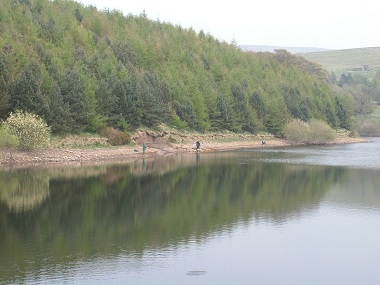United Utilities joins fight to contain tree disease

A tree disease that has been spreading through large tracts of the UK has been found at Lamaload Reservoir near Macclesfield, United Utilities has confirmed.
Phytophthera Ramorum causes extensive damage and death to a range of trees and other plants. Larch trees are particularly susceptible, and large numbers have been affected throughout the UK. The only way to minimise the spread of the disease is to fell the infected trees and any in their vicinity.
The Forestry Commission has served a statutory plant health notice instructing United Utilities to remove all infected larch trees, and other species then left exposed to wind by their removal, in approximately 20 hectares of woodland around Lamaload reservoir. Up to 10,000 trees could be affected, which is around 80 per cent of the woodland area around the reservoir.
The tree felling is due to begin in early November 2020. Wherever possible the timber will be sent to saw mills and other users, through licenced movement of the infected material, and used for construction, fencing products, pallet wood and biomass.
Ross Evans, Estates and Land Manager at United Utilities, said: “We’re doing everything we can to help stop the spread of this damaging disease. We’re working closely with the Forestry Commission plant health and regulatory teams and following forestry industry best practice to implement the necessary biosecurity, wildlife protection and water protection measures.
“It’s very sad that this disease has appeared again, but now more widespread, in the South Pennines. As a responsible landowner we must now fell the trees in the affected area. Once the felling work has been completed, we will replant with predominantly native trees species to ensure the area will recover, whilst providing biodiversity, water quality and landscape enhancement measures for future generations to enjoy.”
Signage will be installed around the reservoir where necessary, and there will be some temporary disruption to public footpaths to allow the felling to take place safely.
The disease is harmless to people and animals, but visitors are being asked to take precautions and play their part in helping stop the spread:
• Avoid the area if possible to prevent the spread of disease to other woodland areas
• Knock off any soil and mud from footwear and bike wheels to prevent it leaving the area. It’s also a good idea to give them a thorough wash when you get home before visiting any other woodlands and parks too
• Keep to marked paths and observe the signage
• Keep dogs on a lead
P Ramorum disease is the generic name for the disease caused by Phytophthora ramorum; an algae-like organism called a water mould. It leads to extensive damage and death in more than 150 plant species, including some forest species. Larch trees are particularly susceptible, and large numbers have been affected around the country.
P Ramorum disease could inflict significant damage to the natural environment and plant-based industries if it were allowed to take its course without intervention. Forestry England carries out almost continuous surveillance for ramorum disease, and deals quickly with outbreaks.